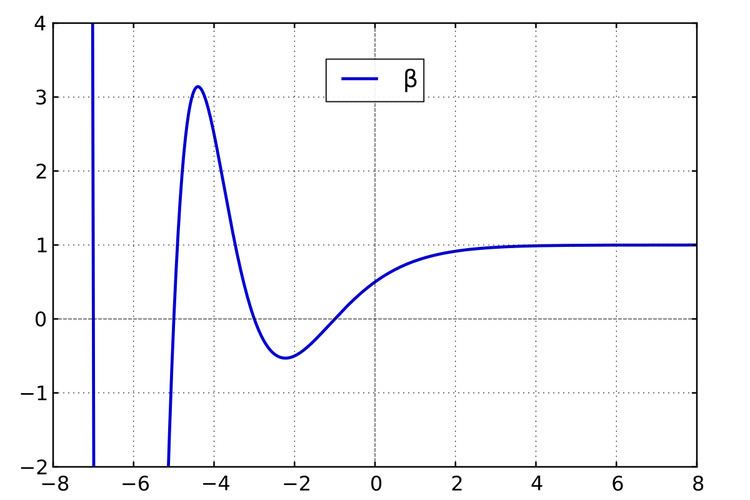 | ||
In mathematics, the Dirichlet beta function (also known as the Catalan beta function) is a special function, closely related to the Riemann zeta function. It is a particular Dirichlet L-function, the L-function for the alternating character of period four.
Contents
Definition
The Dirichlet beta function is defined as
or, equivalently,
In each case, it is assumed that Re(s) > 0.
Alternatively, the following definition, in terms of the Hurwitz zeta function, is valid in the whole complex s-plane:
Another equivalent definition, in terms of the Lerch transcendent, is:
which is once again valid for all complex values of s.
Also the series representation of Dirichlet beta function can be formed in terms of the polygamma function
Euler product formula
It is also the simplest example of a series non-directly related to
At least for Re(s) ≥ 1:
where p≡1 mod 4 are the primes of the form 4n+1 (5,13,17,...) and p≡3 mod 4 are the primes of the form 4n+3 (3,7,11,...). This can be written compactly as
Functional equation
The functional equation extends the beta function to the left side of the complex plane Re(s)<0. It is given by
where Γ(s) is the gamma function.
Special values
Some special values include:
where G represents Catalan's constant, and
where
where
Hence, the function vanishes for all odd negative integral values of the argument.
For every positive integer k:
where
Also it was derived by Malmsten in 1842 that
There are zeros at -1; -3; -5; -7 etc.
